The Tale Of Genji: A Very Modern 1,000 Years Old Novel
The First World's Novel Is Japanese—And Still A Gem
Yes, we've all heard of The Tale of Genji—but how much do we really know about it? Here's a brief guide to the story and the significance of this Japanese legendary classic.
The Tale of Genji (源氏物語, Genji Monogatari), written just over 1,000 years ago is considered by many to be the first world’s modern novel, one of the greatest books in the world, a cultural phenomenon—and one of the most difficult books to read, process—not to mention translate. Nice bonus, it was written by Murasaki Shikibu, the 11th-century noblewoman who profoundly changed Japan’s literary world.
I read Royall Tyler’s translation because it’s so close in form and content to the original Japanese version, and I was immeasurably impressed by so many things: from the lyrical writing style to the range of fascinating characters, the symbolism, the poetry, the imagery, the psychological depth, and the sensitivity to romance, politics, and nature in this exceedingly elegant and beautifully written book. As the book has fallen in the public domain, you can also read the full 1900 translation on websites such as Project Gutenberg.
The story
The first two parts of this literary masterpiece are dedicated to the life of Hikaru Genji or the ‘Shining Genji’—a formidable hero with a name that epitomizes his flawless good looks and an outstanding sense of style. The Uji Chapters or the third part of the book is set in a melancholy and much darker world and follows the lives of Genji’s grandson Niou and his good friend Kaoru.
There is no definitive plot in The Tale of Genji but the art of love and seduction, psychological and emotional fulfillment, or frustration, as well as aesthetics and beauty, all contribute to the central themes. At the same time, intimate relationships are set against a backdrop of politics, power, jealousy, and ambition.
[…]Hikaru Genji or the ‘Shining Genji’—a formidable hero with a name that epitomizes his flawless good looks and an outstanding sense of style
An epitome of Love, Politics & Power
Genji’s romantic pursuits take center stage in this compelling story but it’s Lady Murasaki who becomes his most significant lover. Genji’s feelings towards her are completely sincere, despite his other distractions, and this passion for her deepens throughout the course of his life.
Genji adopts Lady Murasaki when she is just 10-years-old in a display of erotic transference at a time when his marriage turns sour with Aoi no Ue and after a series of frustrating affairs. He’s attracted to Murasaki because she resembles another of his loves, his father’s empress Lady Fujitsubo, the woman who will later bear Genji a secret son—and become a future emperor— called Reizei.
Twists and turns that would make every tabloid blush
Lady Murasaki is a charming, attractive, and sensitive woman but she’s viewed as an inadequate principle wife because her mother was a commoner. Therefore, Genji fosters relationships with several other women to maintain his status and prestigious reputation. His relationships with the Lady of Akashi and Princess Asagao cause Lady Murasaki considerable heartache and in turn, Genji is deeply affected by Lady Murasaki’s reactions and despair.
The political tension between Genji and Suzaku is also played out between romantic affairs. Genji’s father Emperor Kiritsubo had to favor his bland son Suzaku and make him Heir Apparent. In contrast, he made the more dazzling Genji a commoner, but with a significant amount of prestige attached to his name. The difference between the two men’s social positioning, age, looks, and their capabilities definitely enhances the political tension and complements the romantic liaisons.
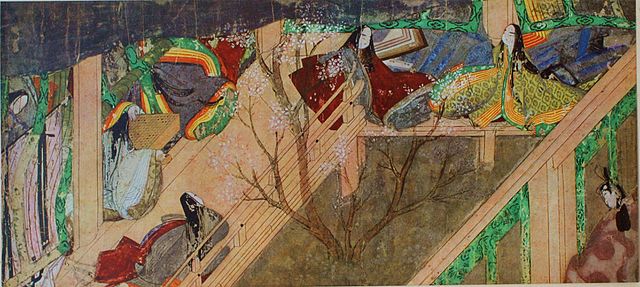
A scene of the Chapter “Takekawa “(Bamboo River) of illustrated handscroll of The Tale of Genji.
The reader is led to assume that The Tale of Genji must be a work of fiction because Genji’s looks, character, and style are so impressive and so completely beyond what you’d expect from a real man.
“He (Genji) has a charm that reminds one still more of just what it means to say that someone shines. When grave and dignified, he has so superbly commanded a presence that one hardly dares to approach him, and when relaxed and in a playful mood, he is sweeter and more engagingly amusing than anyone in the world. No, there is no one like him. He is a wonder, and everything about him speaks of what he must have brought to this life from his earlier ones.” (pg. 579)
A look into the Heian life
Despite Genji’s exceptional qualities, his generosity, and his genuine concern for others, some critics have accused him of immorality, especially for the way he abducted Lady Murasaki. Especially, when he initiated sexual relations with her—but it’s important to remember this book is set in a time full of unbridled passion. Men followed their desires in a purely single-minded fashion and women were not entirely subjugated. In fact, many women held considerable power and influence during the Heian period and they were not afraid to speak their minds.
“Every man is subject to passion, for he is neither stock nor stone.” (pg. 1054)
There are many other aspects of the Heian life delightfully portrayed throughout this enchanting story. The courtesans would amuse themselves during the rainy season with illustrated tales. They would play games on backgammon, tagi, and Go boards or entertain themselves by playing musical instruments such as the kin, so no koto, biwa, sho, and wagon in an accomplished manner.
“Be merry in spirit at least, and play music. This world is always so contrary—do not take it too seriously.” (pg. 855)
Genji and the other courtesans would embark on remote pilgrimages in sumptuous carriages, providing an incredible spectacle. They’d be accompanied by grooms, retainers, footmen, and servants. They’d dress with dignity in gowns and dress cloaks adorned with seasonal patterns in rich fabrics that conveyed their rank and showed off their imperial grace. Gifts of food, alcohol, clothing, and ornaments made by talented craftsmen were often presented and exchanged.
…And gossip
However, life at court could be difficult and complete privacy was rare. Everyone was well aware of the fact that people loved to gossip, including their very own gentlewomen, and every care was taken to avoid ridicule and shame. Women would chat and exchange poems with potential suitors from behind a screen, a blind or a panel to prevent scandal.
To let a man gaze upon them directly was viewed as inappropriate and could affect their reputation. A glimpse of a sleeve through a blind, infused with the finest Chinese incense, could drive a man to distraction. Once the panel was lowered and a woman was in full view she was considered to be his lover.
The importance of being prose-savvy
The poems in The Tale of Genji are exquisitely expressed, they often refer to the beauty of the seasons and nature, and they’re just as captivating as the superbly-written prose.
“Yes, the cherry trees put this truth very plainly: none of the glory of blossoms and autumn leaves lasts long in this fleeting world.” (pg. 897)
Tenerai (writing exercise in the Heian period) was the art of practicing calligraphy or writing out old and new accomplished poems that were meant to impress. The emperor would organize poetry gatherings at the palace and prizes would be awarded to the most accomplished composers.
It was also common for men to pass poems through screens to ladies they fancied hoping for a timely, yet pleasing reply that would encourage them even further. Messengers would deliver letters on colored and fragrant Michinoku-gami (paper made in Michinoku) tied to spring or autumn leaves, branches and blossoms. The tone of the ink, the soft lines of the brush, and the quality of the writing would either delight the reader—or fail to impress.
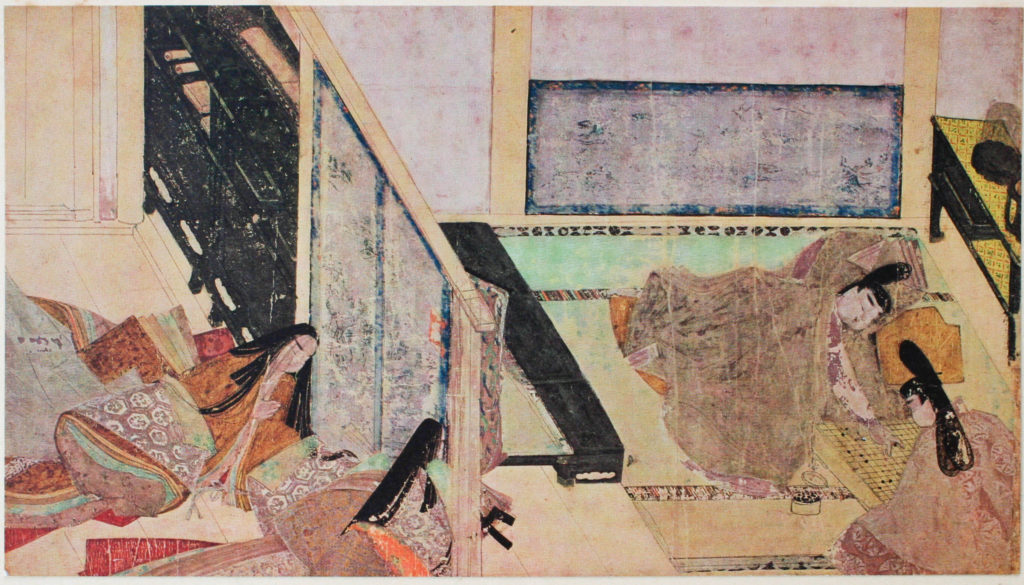
A scene of the Chapter “Yadori gi” (mistletoe) of illustrated handscroll of The Tale of Genji.
Themes reflecting the then-mindset
In the Heian period, many people believed supernatural spirits would try to take over beautiful people and there are lots of references in the book to evil spirits. Buddhist prayers or Shinto purifications were offered to placate or remove their evil influence. Sometimes monoimi, or time of confinement, was recommended in order to avoid their malevolent presence, and children in the upper classes would receive a doll or a dagger at birth to protect them.
Themes of seclusion and death also appear throughout the novel. When court life becomes too tiring and overbearing, characters such as Genji and Kaoru long to escape to the mountains in search of “Enlightenment” which could give them a better understanding of life and its pitfalls. It takes a mature reader to deal with the darker themes that are explored even more predominantly in The Uji Chapters when Hachi-no-Miya’s daughter Oigimi dies and her half-sister Ukifune tries to drown herself, all caused by their entanglements with the main characters Kaoru and Niou. Ironically, the melancholia in the third part of the story makes the previous chapters with Genji shine even brighter.
An everlasting Masterpiece
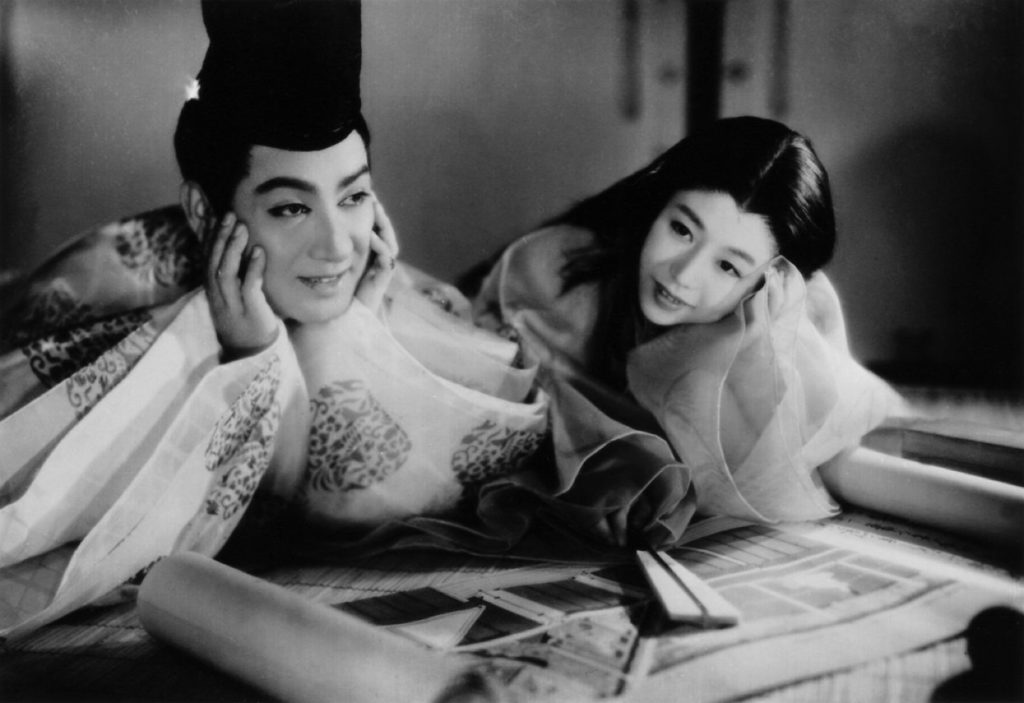
The Tale of Genji has been adapted into a number of movies, including the classic Kozaburo Yoshimura’s 1951 film
The Tale of Genji has been highly praised for its universal themes. This book is brilliant in its execution and it will inevitably have a profound impact on every reader. The many stories within the story remain familiar to this day. As you follow Genji, Kaoru, and Niou and when you read about their romantic interludes you get to see how each of their relationships differs in nature but their earnestness, their mistakes, and the consequences of their actions in their pursuit of women are absolutely timeless.
It’s wonderful how this story reflects relationships and life in many ways that are just as relevant today as they were a thousand years ago and this along with the impeccable writing is why The Tale of Genji is such an important, highly acclaimed and popular piece of literature—still today.
This article was originally published in 2017 and updated with the latest information on May 11, 2020.

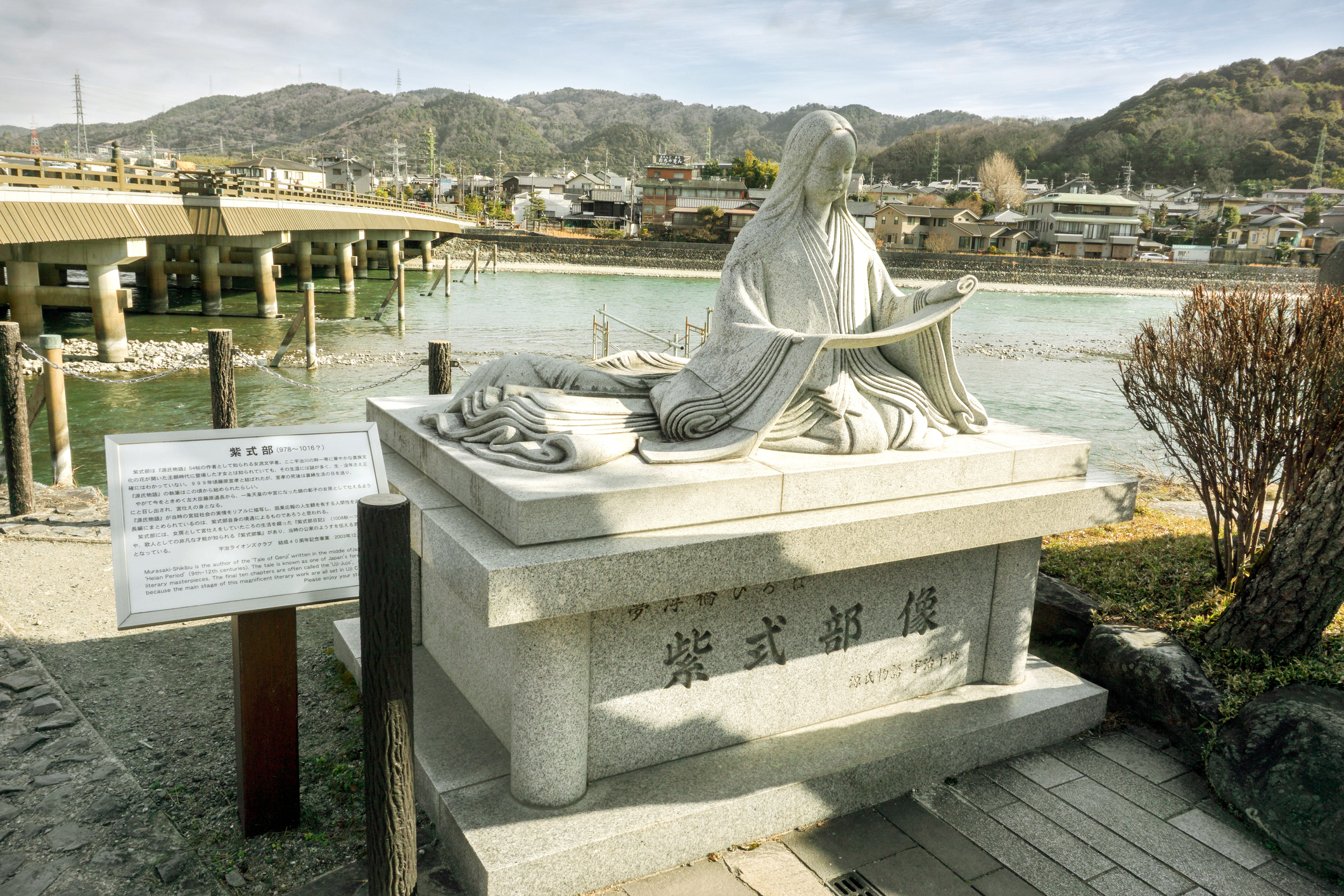
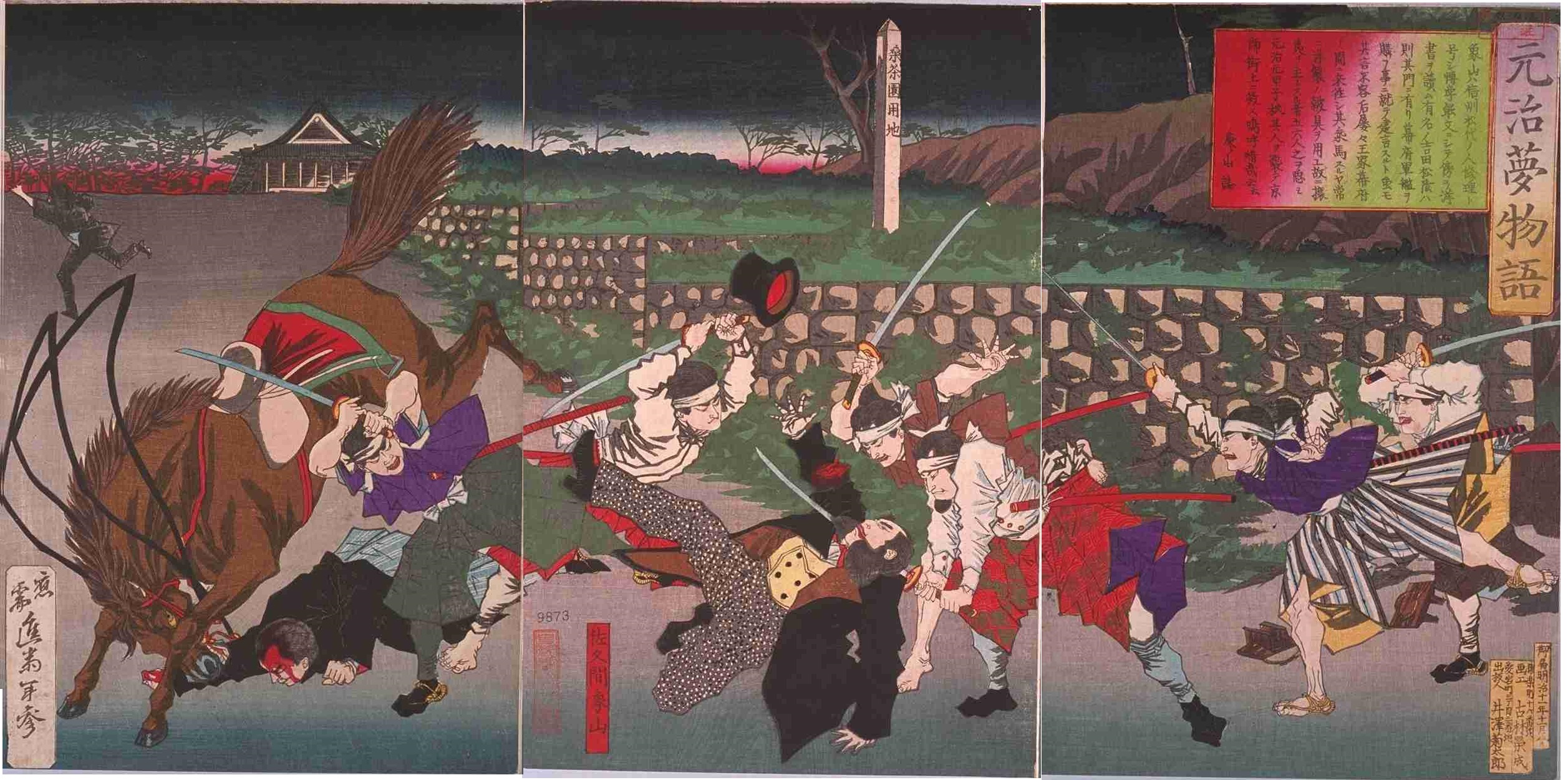












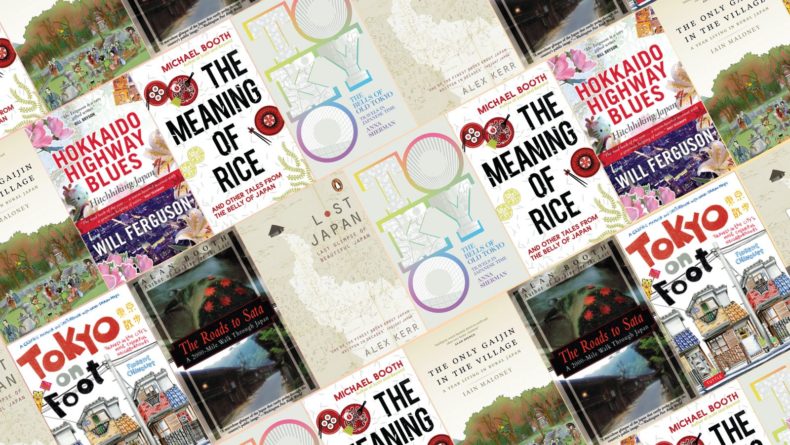

Leave a Reply